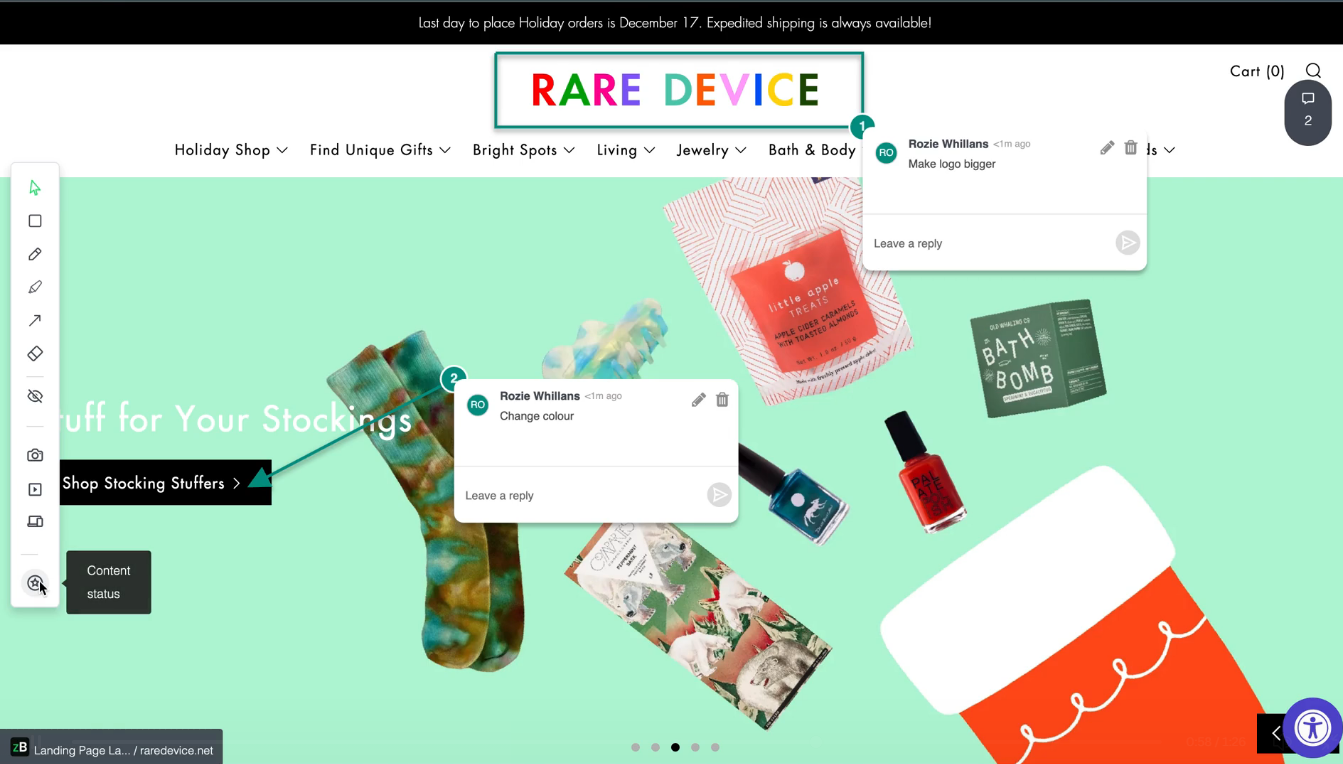The Vital Role of Collaboration between Graphic Designers and Content Marketers
18 Feb

Table of Contents
TogglePoor Collaboration Leads to Poor Results
In a survey conducted by Fierce Inc, they found that after talking with over 1400 employees, 86% of them cited a lack of collaboration for workplace failures. 92% also agreed that hitting or missing a deadline will affect bottom-line results.
This is due to the ripple effect poor design collaboration can cause. Bad communication between teams leads to a lot of time being wasted, which leads to deadlines being missed, a failure to hit targets, and additional revenue losses.
Producing great content is all about the perfect collaboration between designers and marketers. A poor relationship between the two, however, can lead to disastrous outcomes.
In this article, you’ll learn about some of the common problems that can occur when collaboration between graphic designers and content marketers goes wrong, as well as how to overcome those problems.
The Causes of Bad Collaboration between Graphic Designers and Content Marketers
Differing focus
It’s important to be aware that both marketers and designers have their own focus. Marketers want to attract new leads and turn them into customers. Designers on the other hand are thinking about what thoughts and emotions the work generates for people.
The Silo Effect
Marketing and design are often separated into different teams, and to make matters worse many tasks like content writing can be outsourced. The separation can then be further exacerbated by differences in management style or physical distance. This type of isolation can lead to breakdowns in communication, which end up hurting both teams.
No alignment between teams
Having a shared goal or vision can be tough for two siloed teams. Sometimes the priorities will seem vague and unclear. A good way to avoid this is with a creative brief which will help get marketers and designers on the same page. But fair warning, a creative brief is not a cure-all. According to research by Visually, only 23% of designers believe that marketers do a good job briefing the project clearly. Meanwhile, less than 40% of marketers say that designers did a good job following a brief.
Poor feedback, lack of organization, and changes in scope
Both sides can be slow to provide feedback and only 30% of designers claim that marketers are good at giving feedback consistently and clearly. Also, scope changes mid-project can be a disaster as one side underestimates how much work or time new changes will take. This can often result in poor performance or even burnout.
Disorganization
Everyone has their way of naming and distributing files. Multiple channels of sharing and an abundance of files can leave you wasting an inordinate amount of time searching for the right file.
Review content visually with your team
Visually annotate over content to explain issues and changes to your team members using zipBoard. Sign up today to make collaboration seamless
Sign upFixing Poor Collaboration
Here’s how you can collaborate seamlessly with your stakeholders.
Share knowledge of key terms
When you share knowledge of key terms, both sides can understand what the other side is saying. Speaking the same language will help you avoid mistakes and work more efficiently.
Avoid isolation wherever possible
Have the content marketing and graphic design teams work in close proximity to encourage communication

Ensure both teams share the same clear goal in the creative brief
Make sure the graphic designers and content marketers working on the project share the same goal in the creative brief. You can also expand on that further by adding visual references to the brief to speak the designer’s language. But if there’s a problem, asking questions is essential for gaining clarity. The problem is that currently, only 51% of marketers claim that designers make an effort to get that clarity.
Setting realistic expectations, scheduling regular updates, and providing actionable feedback
Only 27% of marketers think designers are good at staying ahead of problems. This is where realistic expectations come in. You need to try and predict both potential future problems and how much revision will be needed to ensure deadlines are being met. Scheduling regular meetings are important to make sure the project is on track and targets are being met. With these consistent updates, both teams have the chance to bring up any problems they’re having and to hear valuable feedback.

Remember, when offering feedback, always start with the project goal in mind. Try to see how the customer would see it and talk about what is working as well as what isn’t. When receiving feedback, you should be open to criticism and avoid taking any comments personally.
You Should Know...
Both graphic designers and content marketers are needed for great content production. Design without marketing is like an empty box in pretty packaging. It’s devoid of substance and leaves nothing for the customer to engage with. And marketing without design is almost the complete opposite — poor presentation means your great marketing gets ignored. Effective communication is what leads to great collaboration between graphic designers and marketers; it’s what produces high-value content.
Streamline Collaboration between Graphic Designers and Content Marketers with zipBoard
Start your free trial or book a demo today so that we can create a tailored solution for you.
Book DemoStart Free TrialThis post was submitted by Scott Stevens
Scott Stevens is the CEO of a content writing service called The Content Panel. He’s a bookworm who’s addicted to the sound of his mechanical keyboard and messing around with general wordsmithery.
Recent Posts
- How Laerdal Medical Cut eLearning Review Time by 50% with zipBoard’s Visual Review Tool July 9, 2025
- Why Your Team Needs a Content Feedback System (Not Just Comments in Docs) May 28, 2025
- Content Approvals Are Slowing You Down — Here’s the Fix May 26, 2025
- How to Streamline Content Review and Approval — Best Practices, Tools & Automation May 12, 2025
- What Is Content Operations? And Why It Breaks Without a Feedback & Approval System May 3, 2025
©️ Copyright 2023 zipBoard Tech. All rights reserved.


